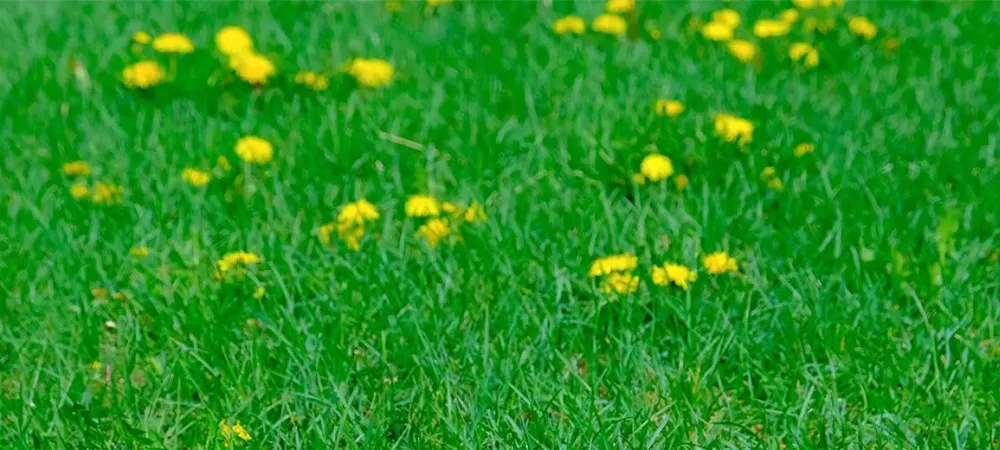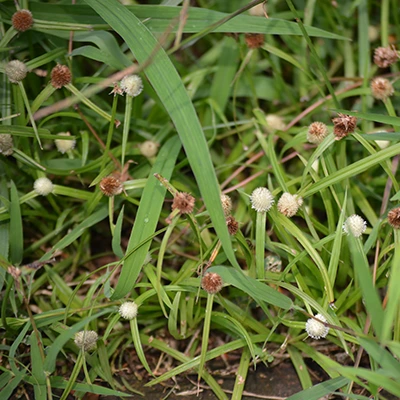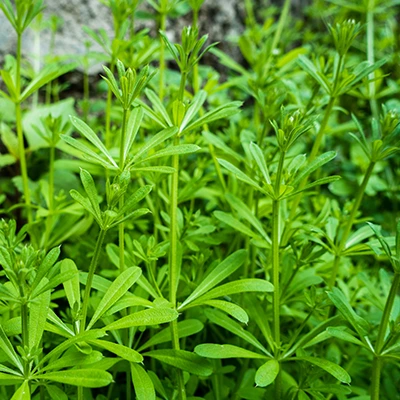Weeds To Watch Out For In Georgia’s Lawns

Late summer is the time when weeds will make one last hurrah before fall, which is why it’s so crucial to get professional weed control before they overtake your lawn. And because we don’t often get consistently cold weather in winter, treating for weeds now can help prevent overwintering weeds as well. At Papa Turf, we use both pre-emergent herbicide and spot-treat stubborn weeds with a post-emergent herbicide. Here are just a few of the dozens of weeds that plague our Georgian lawns.
Common Weeds Found In Georgia Lawns
Nutsedge

Nutsedge reproduces through the root system, and therefore, like crabgrass, it’s difficult to target – but not impossible. It comes in both a yellow and purple variety, named after the colors produced by the respective flowers. It’s actually similar in appearance to your turfgrass, so you may not realize there’s a problem until it begins to flower. One way to tell the difference is to get up close and personal with it. If you do this, you’ll notice that nutsedge blades are stiffer than normal lawn grass. It thrives in almost any kind of soil. The yellow flower variety typically emerges earlier in the summer, while the purple variety crops up later. Yellow nutsedge has light green leaves, while purple nutsedge is dark green. Lastly, yellow nutsedge tends to be about 12 – 16 inches – while purple nutsedge is usually under six inches.
Crabgrass
“Crabgrass” is a common name for a genus of weeds that can be both annuals or perennials. Crabgrass is one of the toughest weeds to eradicate. It not only spreads through seed dispersal but also through runners beneath the surface. Luckily for crabgrass, it thrives in the summer months and is quite a drought-tolerant. That’s why Papa Turf uses a pre-emergent control in late summer and early autumn to prevent crabgrass from rearing its ugly head later down the road.
Dandelions
Interesting, they are edible, and there are dozens of culinary products you can make with them. However, most homeowners plain don’t want them in their yards, and we can’t blame them. Nothing ruins the look of a green lawn like a bright yellow dandelion. Though dandelions are typically done flowering for the year, it doesn’t hurt to treat for them now in late summer. They are incredibly good at spreading their seeds, and like many broadleaf weeds, dandelions need lots of direct light to thrive. With that in mind, you should not only have Papa Turf treat your lawn with herbicide, but you can also help keep them at bay by making sure not to mow the lawn too short. Otherwise, the grass that normally shades the weed seeds won’t be there to blot out the sun. If you’ve had trouble eradicating dandelions in the past, be sure to let our lawn service technician know!
White Clover
Clover will spread quickly and take over your turfgrass. It grows very low to the ground, so running over it with the mower usually doesn’t kill it. Clover commonly gets confused with another weed, oxalis. They both have three or four clusters of leaves, but clover has smaller, rounded leaves and usually only three. The leaves also have a faint white stripe through them, and the plant may produce white or light purple flowers.
Goosegrass

This summer annual ruins lawns and flower beds alike. It actually prefers compacted soil, so if we notice this in your yard, we may recommend an aeration treatment. This will not only help clear up goosegrass but improve the overall health of your lawn. Goosegrass is coarse and grows in bunches that form a rosette of low-growing flattened stems. The leaves are dark green, up to 12 inches long, and about 1/3 inch wide.
Hire A Professional Weed Control Service Near Atlanta
If you’re concerned about broadleaf weeds making a comeback in late summer or early fall, call Papa Turf. We are lawn maintenance and weed control experts with over 30 years of experience. We’ll eradicate those pesky weeds and pave the way for a lush green lawn this fall and all the way to spring. To learn more about how we can help your win the war on weeds, give us a call at 770-202-9797 .
